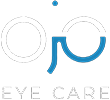Have you ever heard someone say that their cataract must be “ripe” before they can have surgery? Perhaps you know someone with poor vision from their cataracts but they’ve been told they don’t qualify for surgery yet? This may make you wonder how an optometrist can tell when it is time for cataract surgery.
There are a few different factors that optometrists take into consideration when determining if a patient is ready for cataract surgery or not. The first one is the quality of the patient’s best corrected vision (meaning how well they see with their most updated prescription). As cataracts develop, the clear lens inside of the eye becomes hardened and cloudy. This can shift your glasses prescription dramatically, causing blurred vision and halos or starbursts around lights at nighttime. If a patient is unhappy with their vision even with their newest prescription, it may be time to consider cataract surgery.
The second thing we look at is the density of the cataract. By using a microscope (called a slit lamp), we are able to evaluate the cataract directly and grade it on a scale from 1 to 4, with 4 being the densest. We can also use the slit lamp to evaluate what type of cataract you have. There are 3 main layers inside of the lens that can develop a cataract, and you may have only one type or even all 3! The more progressed the cataract is, the harder the lens will be, which makes cataract surgery safer and less likely to have complications. This is what people refer to when they say they are waiting for their cataract to become “ripe.”
Another factor that we take into consideration is the patient’s overall health, support system, and underlying ocular issues. Cataract surgery is an outpatient procedure, but it is still invasive and requires frequent post op visits and use of medicated drops. We need to be sure that a patient has the ability to safely undergo surgery and properly maintain post op treatments. Additionally, cataracts may not be the only cause of a patient’s blurred vision. Underlying ocular diseases such as glaucoma, macular degeneration, or amblyopia (“lazy eye”) may be the cause, wherein cataract removal would not provide any improvement in vision, and therefore would not be worthwhile for the patient.
Cataracts are a natural aging process of the eye that will occur in everyone if they live long enough, and is almost universal in anyone over the age of 70. They develop at varying speeds and some people will require surgery much sooner than others. If you feel you have a cataract or know you do and think you may be ready for surgery, reach out to us to schedule an appointment so we can evaluate and discuss your options with you! In many cases, surgery is covered by your major medical insurance and we can conveniently see you in our Ogden office for your post op visits!


